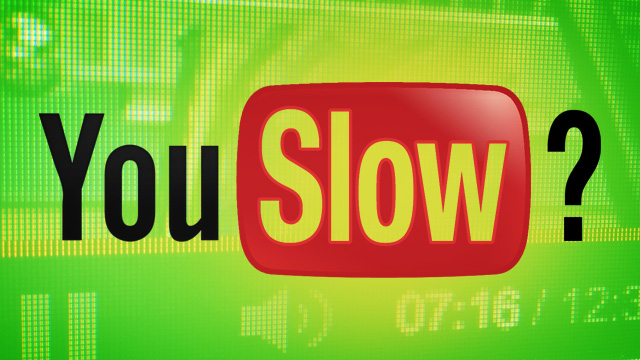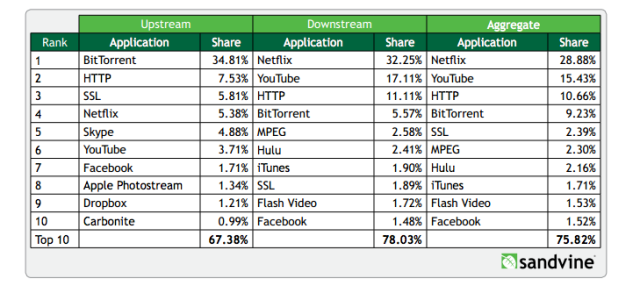
Lee Hutchinson has a problem. My fellow Ars writer is a man who loves to watch YouTube videos—mostly space rocket launches and gun demonstrations, I assume—but he never knows when his home Internet service will let him do so.
"For at least the past year, I've suffered from ridiculously awful YouTube speeds," Hutchinson tells me. "Ads load quickly—there's never anything wrong with the ads!—but during peak times, HD videos have been almost universally unwatchable. I've found myself having to reduce the quality down to 480p and sometimes even down to 240p to watch things without buffering. More recently, videos would start to play and buffer without issue, then simply stop buffering at some point between a third and two-thirds in. When the playhead hit the end of the buffer—which might be at 1:30 of a six-minute video—the video would hang for several seconds, then simply end. The video's total time would change from six minutes to 1:30 minutes and I'd be presented with the standard 'related videos' view that you see when a video is over."
Hutchinson, a Houston resident who pays Comcast for 16Mbps business-class cable, is far from alone. As one Ars reader recently complained, "YouTube is almost unusable on my [Verizon] FiOS connection during peak hours." Another reader responded, "To be fair, it's unusable with almost any ISP." Hutchinson's YouTube playback has actually gotten better in recent weeks. But complaints about streaming video services—notably YouTube and Netflix—are repeated again and again in articles and support forums across the Internet.
Why does online video have such problems? People may assume there are perfectly innocent causes related to their computers or to the mysterious workings of the Internet. Often, they're correct.
But cynical types who suspect their Internet Service Providers (ISPs) intentionally degrade streaming video may be right as well. No, your ISP (probably) isn't sniffing your traffic every time you click a YouTube or Netflix link, ready to throttle your bandwidth. But behind the scenes, in negotiations that almost never become public, the world's biggest Internet providers and video services argue over how much one network should pay to connect to another. When these negotiations fail, users suffer. In other words, bad video performance is often caused not just by technology problems but also by business decisions made by the companies that control the Internet.
These business decisions involve "peering" agreements that Internet companies make to pass traffic from one to another and negotiations over caching services that store videos closer to people's homes so they can load faster in your browser. When Internet providers refuse to upgrade peering connections, traffic gets congested. When ISPs refuse to use the caching services offered by the likes of Google and Netflix, video has to travel farther across the Internet to get to its final destination—your living room.
The negotiations can lead to brinksmanship and bad blood. Recent public examples of such spats include:
- November 2010: After Internet backbone provider Level 3 signs a deal with Netflix to distribute video, Comcast demands money from Level 3 for carrying traffic over the proverbial "last mile" to Comcast subscribers.
- January 2011: European ISPs Deutsche Telekom, Orange (formerly France Telecom), Telecom Italia, and Telefónica commission a report saying companies like Netflix and Google's YouTube service should give ISPs a lot more money.
- August 2011: Cogent, another Internet backbone provider that handles Netflix traffic, files a complaint in France against Orange, saying the ISP is providing inadequate connection speeds.
- January 2013: Free, a French ISP, is accused of slowing down YouTube traffic by failing to upgrade infrastructure (but is later cleared of intentionally degrading YouTube traffic by the French regulator). Free also temporarily blocks ads on YouTube and other video services by sending an update to its modems.
- January 2013: Orange and Google have a similar dispute, with Orange CEO Stephane Richard claiming victory. He says that Google is paying Orange to compensate the operator for mobile traffic sent from Google servers.
- January 2013: Time Warner refuses Netflix's offer of a free caching service that would provide better performance to Netflix users on Time Warner's network.
- June 2013: Cogent accuses Verizon of allowing "ports" between the two providers to fill up, degrading Netflix performance for Verizon customers.
- July 2013: The European Commission opens an antitrust probe into whether ISPs abused market positions in negotiations with content providers, and it searches the offices of Orange, Deutsche Telekom, and Telefónica. Separately, the French government demands details of interconnection agreements involving AT&T and Verizon.
In the most extreme cases, large Internet companies stop passing traffic to one another entirely. (This happened in 2005 with France Telecom and Cogent, in 2005 with Cogent and Level 3, and in 2008 with Sprint and Cogent.) But recent disputes have been less likely to lead to a complete severing of ties. "That type of reaction to a policy is becoming less common, possibly because it's so easy to publicize it," Reggie Forster, director of network engineering at XO Communications, told Ars. "They tend to want to keep that quiet."
Instead, network operators can degrade traffic by failing to upgrade connections without severing them entirely. The public won't realize that's what's going on unless negotiations become so contentious that one party makes them public—or a government decides to investigate.
Degraded connections disproportionately affect the quality of streaming video because video requires far more bits than most other types of traffic. Netflix and YouTube alone account for nearly half of all Internet traffic to homes in North America during peak hours, according to research by SandVine. And customers are far more likely to be annoyed by a video that stutters and stops than by a webpage taking a few extra seconds to load.

To get to the root of these problems, we need to take a step back and talk about the Internet itself. The very name "Internet" suggests many networks interconnecting, but few people know how the terms of these connections are negotiated. Understanding the business relationships that allow the Internet to exist in its present form is crucial to understanding the subtle and not-so-subtle ways Internet companies can bring your YouTube and Netflix videos to a slow stutter.
reader comments
240